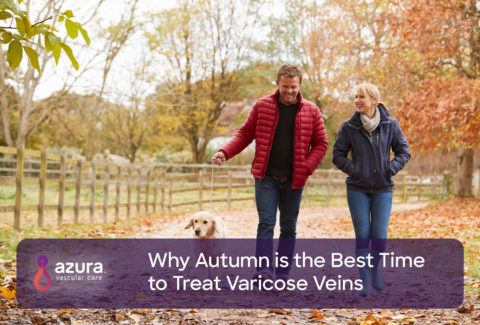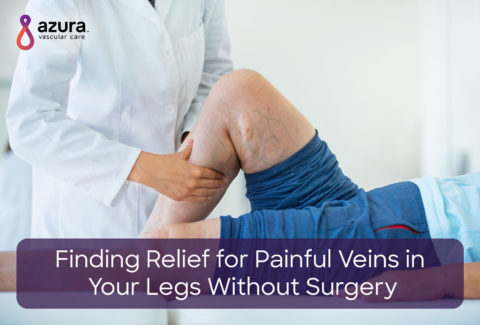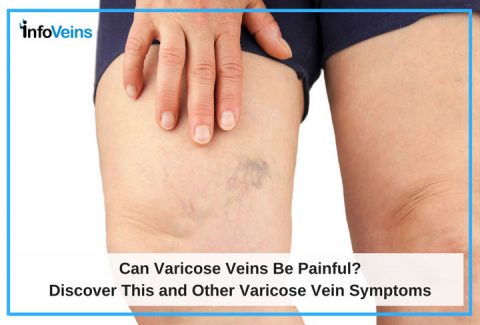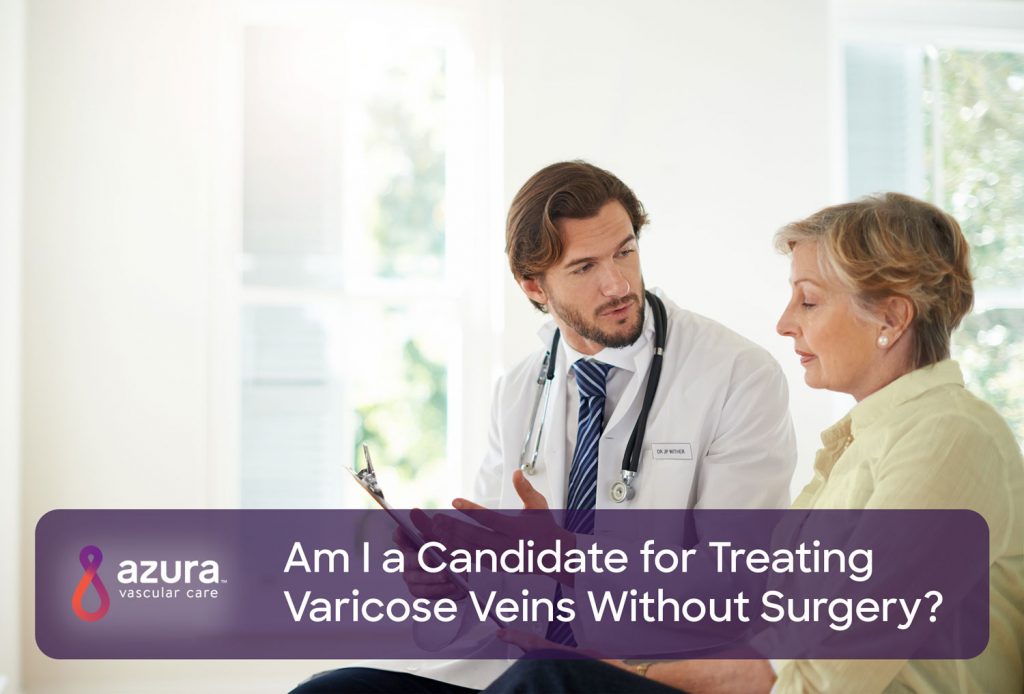
Have you been suffering from painful varicose veins for a long time? Are you experiencing symptoms that could indicate you have a serious form of vascular disease? Understanding your symptoms and speaking with a vascular specialist can help determine if you are a candidate for treating varicose veins without surgery.
RELATED: What are Varicose Veins and What Causes Them?
Varicose Veins and Age
Varicose veins are bulging, bluish veins on the legs that look twisted and can be painful. They are a common problem and tend to develop as we age. About 33 million adults in the United States between the ages of 40 and 80 have varicose veins.i
Varicose veins form when the one-way valves that prevent blood from flowing backward become incompetent. This results in the back flow of blood which pools in the vein and increases pressure on its walls, causing the veins to get bigger. Weakened vein walls cannot handle the increased pressure, and a varicose vein may develop.
As you age, the valves and walls of your veins may not function as well as they once did.ii While there is no real age limit for treatment, you should keep in mind that you may not be a candidate for every treatment option available – minimally invasive or surgical. Your physician can best determine which treatment you are a good candidate for.
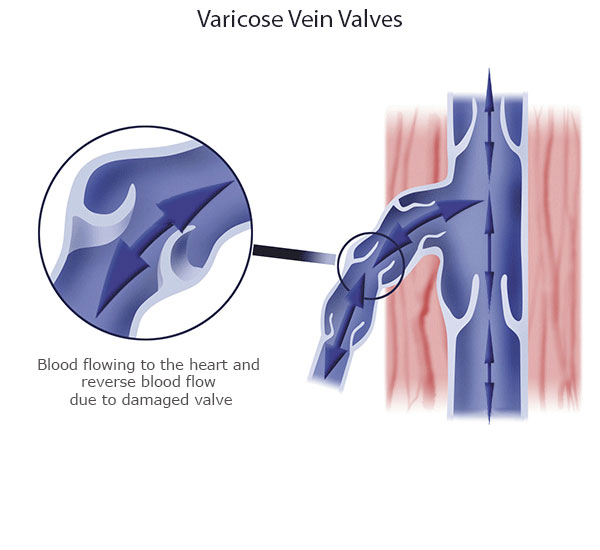
Symptoms of Varicose Veins
If you have any of these symptoms as a result of your varicose veins, it may be time to consider taking action as sometimes varicose veins lead to more serious problems:
- Pain or a feeling of heaviness in your legs
- Swelling in your legs, ankles or feet that worsens throughout the day or is constant
- Changes in the color or texture of your skin
- A throbbing or burning sensation in your legs
- Sores that heal slowly, or that don’t heal at all
- Blood clots
- Excessive bleeding after even a small injury to your legiii
Talk to your doctor about your symptoms, and know that there are lifestyle changes you can make right now to potentially improve some of the symptoms caused by your varicose veins.
- Lose a little weight – It can be harder to lose weight as you get older, but the excess weight may be causing added stress on your veins.
- Take a walk – If you are able, get regular exercise. Your doctor can help you find a walking or movement program that is safe for you.
- Elevate your legs – If you find yourself sitting a lot, remember to put your legs up throughout the day. Ideally, your legs should be above the level of your heart for 30 minutes at a time. Try to do this 4 times a day.
- Wear compression stockings – Talk to your doctor and find out if you should try wearing these special elastic stockings to help support your veins and prevent swelling.iv
If these changes have no impact, then it may be time to talk to a Vascular Specialist near you to see what your minimally invasive treatment options are.
Minimally Invasive Options to Treat Varicose Veins
Surgery has been a treatment for a long time, but it also has more risks and the recovery is typically longer and more uncomfortable than the minimally invasive alternatives. Minimally invasive treatments were developed to offer effective treatment options for varicose veins with less risk, less pain and a shorter recovery time than traditional surgery.
Interventional Radiologists and Vascular Surgeons are doctors specially trained to perform these procedures for varicose veins treatment. Talk to your doctor to find out more about whether or not one of these options may be right for you. Note that you should not have these treatments if you have a blood clot or active infection.
- Sclerotherapy – A chemical that scars the varicose vein is injected into the vein to close it off. When effective, the vein will eventually go away. Sclerotherapy is particularly known for its effectiveness to treat spider veins, which are purely cosmetic, and may also be used to treat small superficial varicose veins.
- Endovenous laser ablation – Using ultrasound to monitor movement, a catheter (a thin tube), is inserted and moved through the vein. At the right location in the varicose vein, a laser fiber at the tip of the catheter heats the vein from the inside. This stops the blood flow through the vein, and eventually it goes away.
- Endovenous radiofrequency ablation – This is performed in the same way as endovenous laser ablation, but the heat is generated from radiofrequency waves.
- Microphlebectomy – Also known as ambulatory phlebectomy, this treatment involves the use of a special instrument to remove the affected vein through small nicks in the skin. This treatment is commonly part of an overall treatment plan and often complements endovenous treatments nicely.iv
You may be a candidate for a minimally invasive treatment option for your varicose veins. Request a consultation with a vascular specialist who is an expert in varicose veins treatment without surgery. Bring your medical history, and a list of your medications and any allergies to review with your doctor during this visit. Together you can figure out if there are varicose vein treatments that will provide you with symptomatic relief.
Sources:
iPiazza, G., Varicose Veins. Circulation, 2014. 130: p. 582-587. http://circ.ahajournals.org/content/130/7/582.long
iiNational Heart, Lung and Blood Institute. Who Is at Risk for Varicose Veins? https://www.nhlbi.nih.gov/health/health-topics/topics/vv/atrisk (updated 1/29/2016, accessed 11/30/2016)
iiiNational Heart, Lung and Blood Institute. What Are the Signs and Symptoms of Varicose Veins? https://www.nhlbi.nih.gov/health/health-topics/topics/vv/signs (updated 2/13/2014, accessed 11/30/2016)
ivLin, F., Zhang, S., Sun, Y., Ren, S., Liu, P., The Management of Varicose Veins. Int Surg, 2015. 100: p. 185-189. https://www.ncbi.nlm.nih.gov/pmc/articles/PMC4301287/

